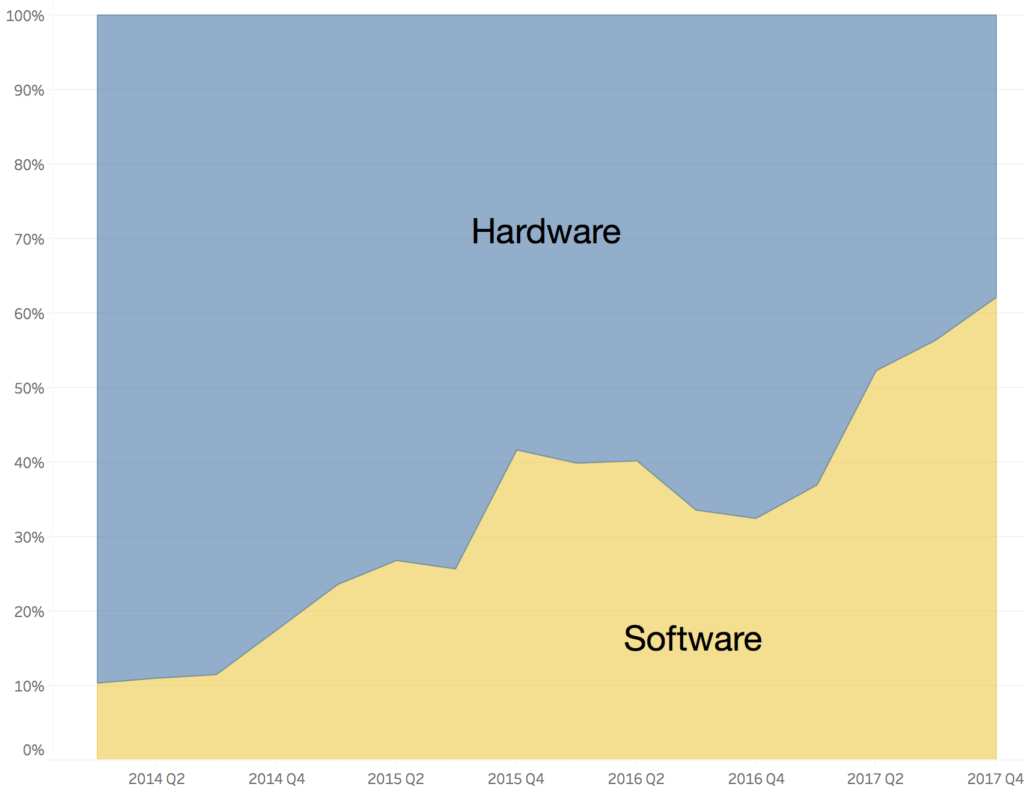In keeping with the theme from last week, we have been taking a deep look at our entire collaboration database. This week, I thought I would share some of the more interesting trends and insights around usage and adoption. We normally provide details like this, benchmarks, and customer-specific insights as part of our UC Assessment that happens at the end of your first 30 days of using Vyopta vAnalytics.
Usage Breakdown by Model and Type
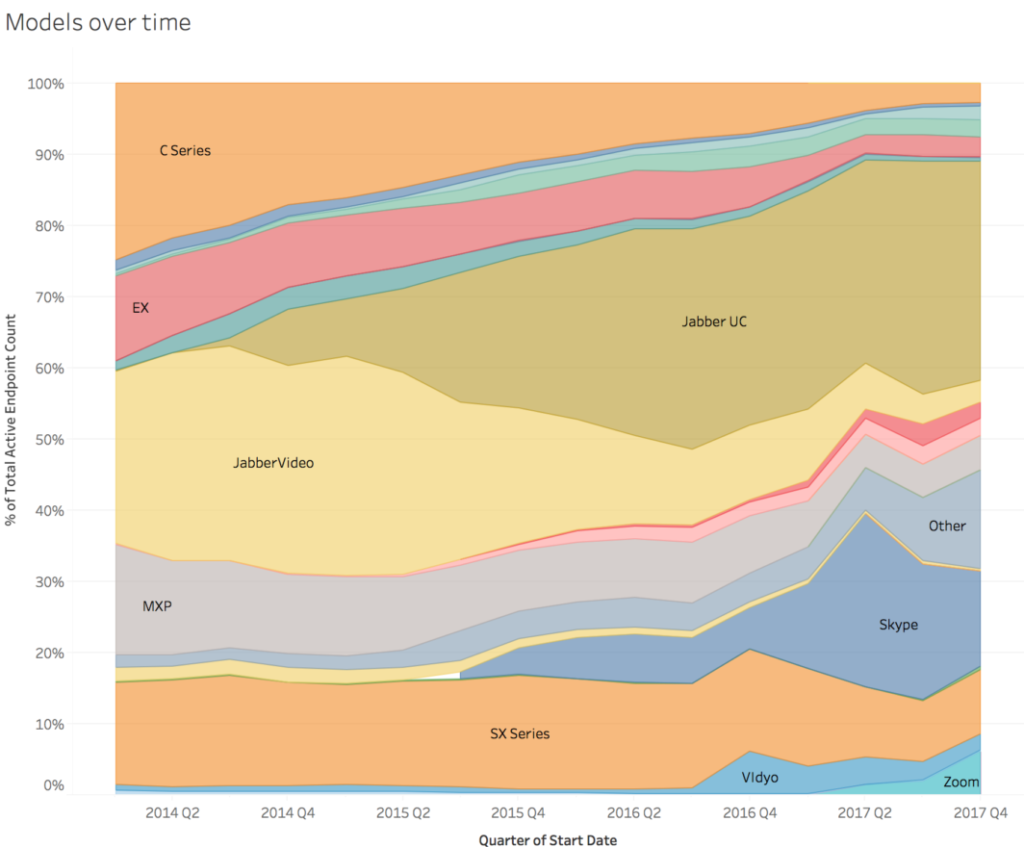
Change in Percent of Total usage over time
This trend of calls over time, broken down by model type was especially interesting to me. There are some trends that you would expect, like the replacing of JabberVideo with JabberUC or the phasing out of older C Series, EX, and MXP devices. When you look at the chart for more than a few seconds, you also start to notice some bigger trends; such as that the share of calls made on hardware endpoints is decreasing dramatically when compared to software. More on that below.
You can also see that overall there are a wider variety of endpoints now than in the past. This is a reflection of Vyopta adding to the number of systems we collect data from as much as it is a demonstration of how customer environments include more vendors today than they did in the past.
One final bit of info is that the tiny light-pink slice in the middle reflects Mobile types of endpoints aggregated across all vendors. As much as everyone likes to talk about “working from anywhere,” most people still use their mobile devices to join via cellular networks rather than mobile apps. It’s usually just simpler to join calls this way, but applications like Cisco Spark are making it easier to call and join meetings with a single click. And the quality can be a lot better on these applications as well – especially when on WiFi.
Interesting Stats about Video
At Vyopta, we view video collaboration as the better format for collaboration of the future, so we like to take special effort to analyze the way people communicate with video. The data was very interesting on this, especially looking at how video calls were distributed by endpoint type.
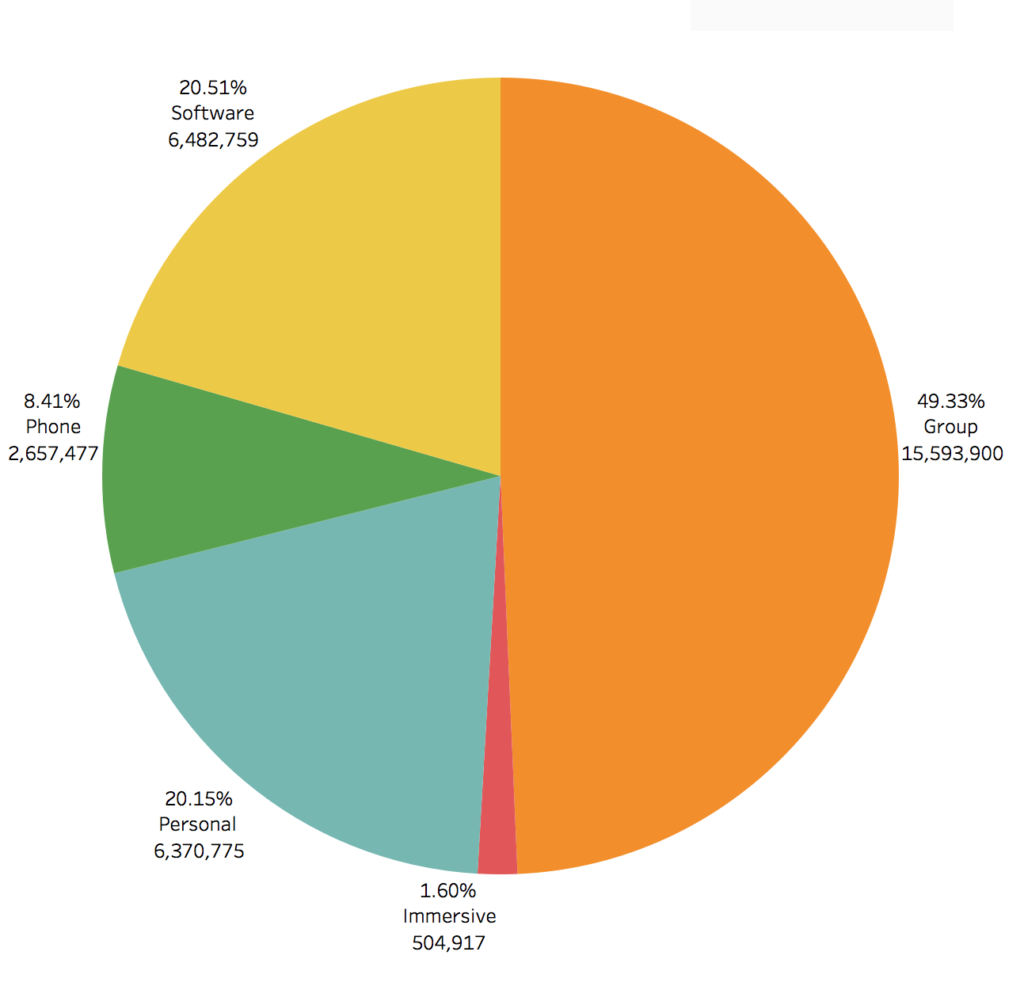
Percentage of Video calls by endpoint type
It’s not surprising to me that most video calls still happen through Group type endpoints (AKA rooms). However, the rapid growth of personal, software, and phone endpoints is pretty incredible given that they haven’t been able to make video calls for nearly as long as room endpoints.
Is Software Eating the World (of Collaboration)?
In keeping with the previous theme, when you break down the software usage, you see a lot of growth in the past two years. Software video usage literally tripled among Vyopta’s customers from 2016 to 2017. If this happens again, it would mean that Software endpoints would surpass all Hardware combined for video minutes in 2018. As you can see, Zoom usage is growing among our customers as rapidly as it is growing in the rest of the world.
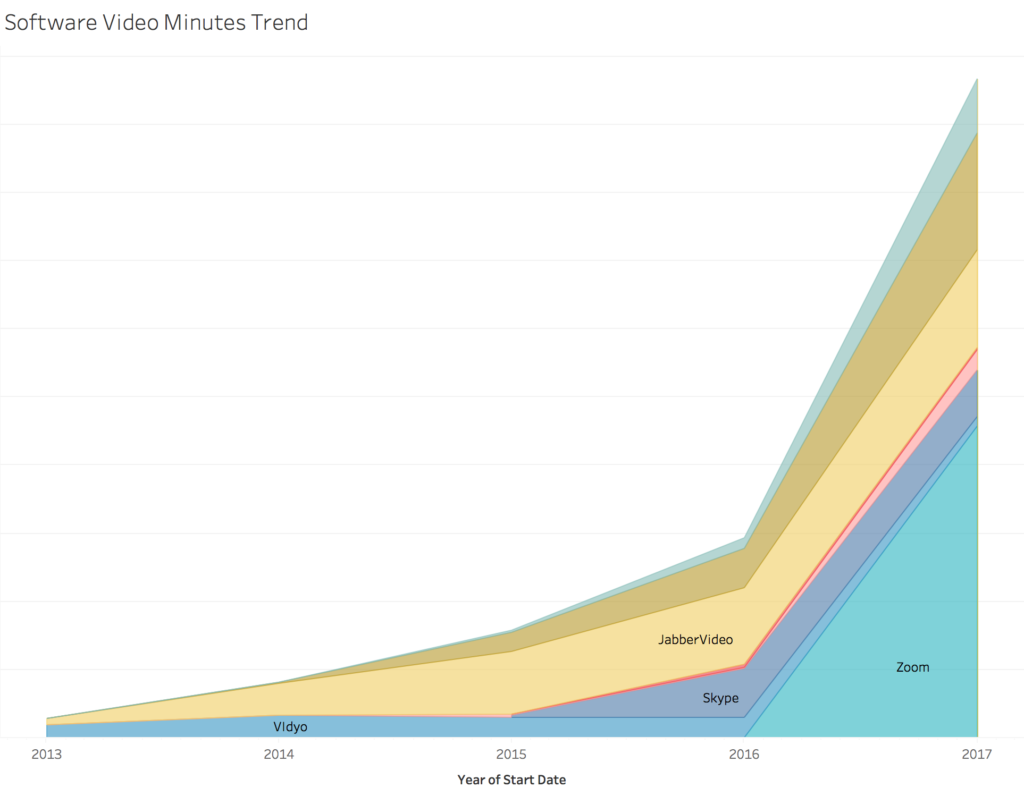
Video Minutes Trend by software type
However, this does not mean that all collaboration will be happening through software in the next couple of years. The overall data is clear that the majority of collaboration still happens through hardware endpoints. It is also important to note that there is a strong positive relationship between increasing software collaboration and the increasing usage of hardware. This healthy correlation is great for businesses and vendors alike as software licenses become easier to use and more prevalent, so will rooms.
Other Insights
This data is based on the same database as our last blog on adoption, and will also be featured in an upcoming book we are creating dedicated to helping UC managers increase adoption.
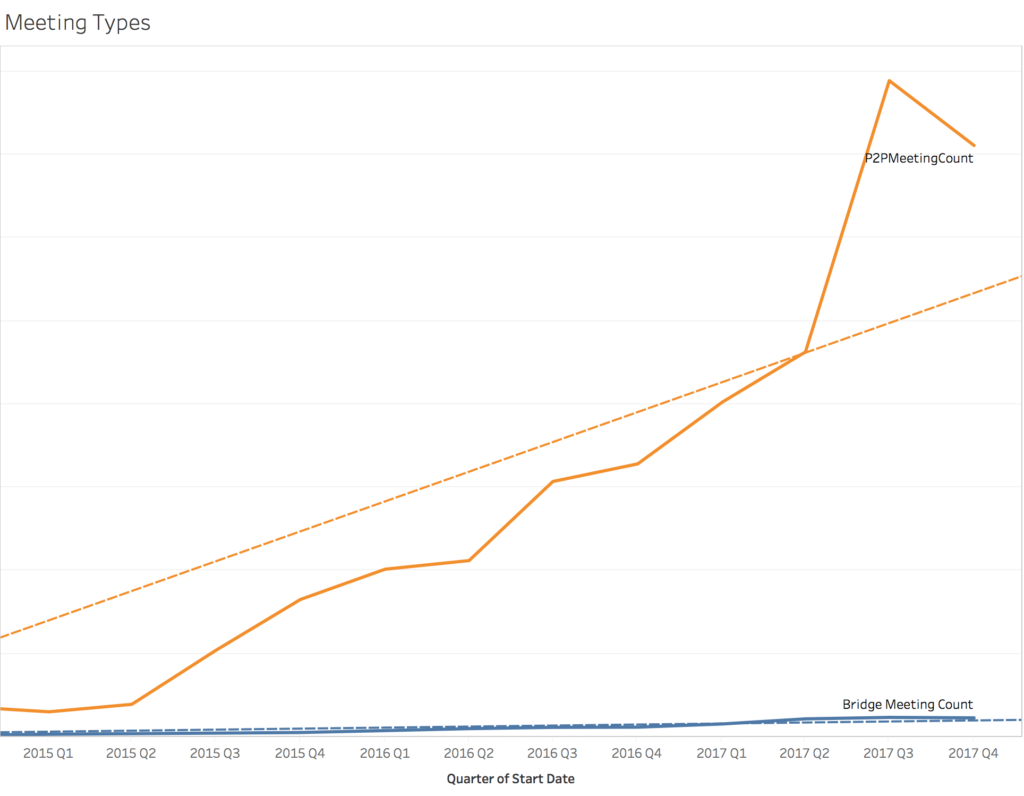
Meetings by Type: P2P vs Bridge
One key metric to track for adoption is having more, larger meetings that consist of multiple participants from multiple locations. This type of meeting is the best at increasing productivity and reducing travel because it brings together talent from many different locations into a single meeting. The data is not really that encouraging on that note. Point to Point (P2P) meetings are just calls between two devices, and while it is good that this metric is increasing rapidly, it would be better if bridge meetings were growing as rapidly.
We will delve more into this in the future, but let us know if there are any trends that you would like us to investigate by emailing [email protected]




